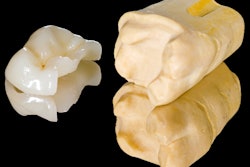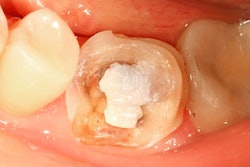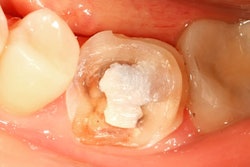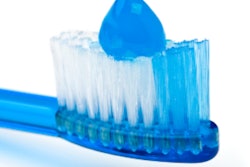
Severe tooth wear can cause a number of problems for patients, but minimally invasive options to restore worn teeth are limited. A new study, however, has found that building up resin composite on teeth with severe wear appears to be a successful treatment option.
The study investigated the success rate of composite restorations when restoring teeth with at least 2 mm of mechanical or chemical wear. The researchers wanted to know whether building resin composite for these patients would yield similar results to patients without severe wear. They published their findings in the Journal of Dentistry (January 12, 2018).
"These results indicate that large buildup resin composite restorations can be used to treat patients with severe tooth wear," wrote the authors, led by Bas Loomans, DDS, PhD, an assistant professor at the Radboud Institute for Health Sciences in Nijmegen, the Netherlands.
Minimally invasive restoration
Severe tooth wear can cause pain, functional problems, and a less-than-ideal aesthetic. Minimally invasive restorative treatment to increase the vertical dimension of occlusion (VDO) can correct these problems. Yet few, robust studies have evaluated the success rate of using built-up resin composites to increase occlusal height.
For their study, the researchers recruited 34 participants with severe tooth wear who needed full rehabilitation. The participants were all adults with chemical or mechanical wear of at least 2 mm. Patients with temporomandibular disorders (TMD), periodontitis, and deep carious lesions were excluded from the study.
The 34 study participants received a total of 1,256 composite restorations on 900 teeth. The majority were anterior restorations (687), followed by premolar restorations (324) and finally molar restorations (245). The vertical dimension of occlusion increased by an average of 1.3 mm.
The researchers then observed the participants for 3.5 years to evaluate the restoration success rate. They considered a restoration as successful, failed, or survived based on the following criteria:
- Successful: Restorations not needing repair during the observation period
- Failed: Restorations needing replacement during the observation period
- Survived: Restorations needed minor repairs, such as for a small fracture or damage from caries, but not replacement during the observation period
The researchers found that about 95% of the built-up resin composite restorations were successful during the 3.5-year study period. Furthermore, 99.3% survived the full observation period.
Restorations on molars, however, were significantly more likely to fail than restorations on anterior teeth and premolars. In addition, anterior restorations placed in two treatment sessions were significantly more likely to fail than those placed in one session.
"It was remarkable that the placement of the palatal and the buccal part of anterior restorations in two different sessions, which was sometimes done due to the schedule of appointments, increased the risk of failure by four times," the authors wrote. "To prevent these problems, we advise to build up both the palatal and buccal surfaces if a patient with tooth wear is treated with composite."
Apparent success
The study had a number of shortcomings, including a lack of a comparative control group of participants whose teeth were restored with a different technique or material. This was because there weren't enough patients, the authors noted. Furthermore, patients with TMD and periodontal disease were excluded from the study, so the results may not be applicable to all types of patients.
Nevertheless, the composite restorations had a success rate similar to patients without severe wear, suggesting that this technique can work successfully for this specific population.
"The results of our study are a strong indication that the full rehabilitation with direct composite restorations is a valid treatment option for severe tooth wear patients with decreased VDO in the midterm," the authors wrote. "The observations also suggest that is not required to differentiate in etiology when making treatment plans with composite."



















